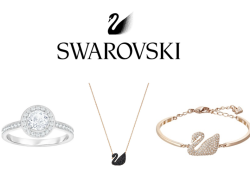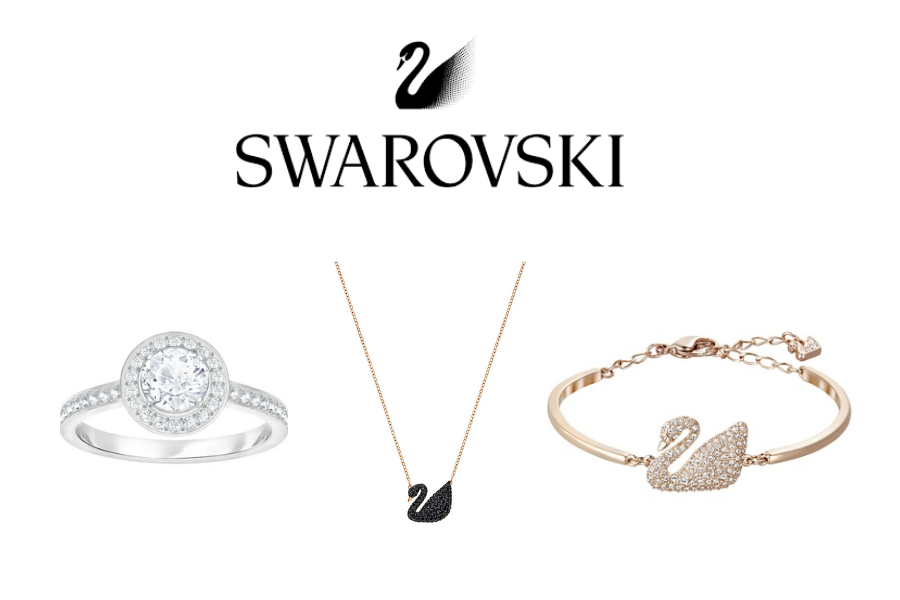Get to know Swarovski Jewelry – Swarovski is a glass manufacturer based in Wattens, Austria, and has been a family business since it was founded in 1895 by Daniel Swarovski.
Get to know Swarovski Jewelry

swarovskijewelry – The company is divided into three main business areas: Swarovski Crystal Business, which mainly produces crystals, jewelry and accessories; Swarovski Optik, which makes optical instruments such as telescopes, rifle scopes and binoculars; and Tyrolit, which manufactures sawing, drilling and dressing equipment and is a supplier of equipment and machinery.
Today, Swarovski Crystal Business is one of Swarovski’s busiest divisions, with around 3,000 stores in around 170 countries, more than 29,000 employees, and sales of around 2.7 billion euros in 2018.
Swarovski is now run by the fifth generation of the founding family.
Daniel Swarovski was born in northern Bohemia (now the Czech Republic), 20 km from the border with today’s Poland. His father worked as a glass cutter and owned a small glass factory. Daniel Swarovski also had an internship at his father’s factory until finally learning the glass cutting profession.
In 1895, Swarovski, Armand Kosmann and Franz Weis officially founded A. Kosmann, D. Swarovski & Co., which was later abbreviated to KS & Co. The company also established a crystal cutting factory in Wattens, Tyrol (Austria), which used local water power to carry out a sharpening process previously patented by Daniel Swarovski. Swarovski’s vision is to create “diamonds for everyone” by making crystals accessible.
In 1899, the company first used the edelweiss flower in its logo and expanded into France, where it became known as Pierres Taillées du Tyrol (“Stone Cutters”) of Tyrol”). In 1919, Swarovski founded Tyrolit to carry sharpening and polishing equipment crystal industry to other markets.
In 1935, Swarovski’s son, Wilhelm, created a pair of binoculars, which led to the launch of Swarovski Optik fourteen years later. Swarovski Optik produces optical instruments such as binoculars, rifle scopes and telescopes.In 1977, Swarovski expanded to the United States.
In 2012, Nadja Swarovski, great-granddaughter of the company’s founder, became the first woman on Swarovski’s board of directors.
Members of the Swarovski family were Nazi sympathizers, and at least six members of the Swarovski family were members of the left before the annexation of Austria to Nazi Germany on 12 March 1938.
Three weeks earlier, 500 people in Wattens, Tyrol, held a torchlight march with chants of “Sieg Heil” and “Heil Hitler” ending. According to police, most of the parade participants were Swarovski factory employees as well as members of the Swarovski family such as Alfred, Wilhelm and Friedrich.
In his report to the police on 14 February 1947, the Innsbruck district administrator described Alfred Swarovski as “an active member of the NSDAP”. Alfred Swarovski also praised Hitler at meetings and, as a regional business leader, worked to ensure that “Tyrol industry could be integrated as smoothly as possible into the larger German state. industry.” Also in Nazi economic policy, Alfred sent a “loyalty note” to Adolf Hitler on his 49th birthday and donated 100,000 schillings so Hitler could build a holiday home in Tyrol.
The company used its political connections and leadership role in regional business associations to emerge stronger from the Nazi era. During the war, the company diversified production and expanded its business by producing pencil sharpeners, optical devices, telescopes, binoculars, etc. During the war, the number of employees increased from just 500 to almost 1,200 between the Anschluss and March 1944.
Get to know Swarovski Jewelry
Post-war – Alfred Swarovski explained before the Innsbruck Tribunal: “From my party membership I only took advantage of the fact that as a member of the party I could initiate the negotiations necessary for the maintenance of the company, and negotiations with the relevant Reich organs achieved encouraging results
In 1994, historian Horst Schreiber wrote about Swarovski’s past, but did not have access to the company’s archives.
In 2018, Swarovski also hired incumbent Dieter Schuhe, which board spokesman Markus Langes-Swarovski described as “a step forward in dealing with “Swarovski history must be taken seriously and very proactively.” However, the results of Stiefel’s research were not made public, and Langes-Swarovski also stated: “Swarovski is a company that generally strives to keep the personal stories of its owners confidential before making them public. kept it a secret because it had nothing to do with his business.
Product
Swarovski produces products such as glass figurines, miniatures, jewelry, rhinestones, home decor, and candle holders.
All Swarovski figurines are marked with a logo. Swarovski’s edelweiss flower logo has been replaced with the S.A.L logo. which was replaced by the swan logo in 1988.
Swarovski glass is made by combining a mixture of quartz sand, soda, potash and other high-temperature ingredients. Lead, which was usually used in the form of oxide lead, is no longer used and all crystals produced by Swarovski since 2012 are lead-free. To create glass crystals that allow light to refract in the rainbow spectrum, Swarovski – Coatings uses product parts with a special metallic chemical coating. For example, Swarovski’s Aurora Borealis or “AB” coating gives a rainbow-colored appearance to the glass surface. The company also mentioned other surfaces, including Crystal Transmission, Volcano, Aurum, Shimmer and Dorado. This layer can be applied to multiple objects or even twice, which is why it is called AB 2X, Dorado 2X, and so on.
In 2004, Swarovski released Xilion, a copyrighted work. The cut is designed to optimize the brilliance of the rose (flat-bottomed component) and chaton (diamond cut).
The Swarovski Group includes Tyrolit (manufacturer of sharpening and cutting tools); Swareflex (reflective and fluorescent road markings); Swarovski gemstones (natural and synthetic gemstones); and Swarovski Optik (optical instruments such as binoculars and rifle scopes)
The Royal Canadian Mint has issued collector coins with Swarovski crystal components since 2006. The 2006 Crystal Snow coin is made of gold (denomination $300) and features six multi-colored lenticular crystals on a snowflake on the reverse. In later years, the crystal snow coin was a silver $20 coin with crystals of various colors. In 2018, the Canadian Mint released twelve different lucky coins, each with a different Swarovski crystal. The 12-coin Zodiac coin series released in 2019 by the Canadian Mint features 20 Swarovski crystals on each coin.

